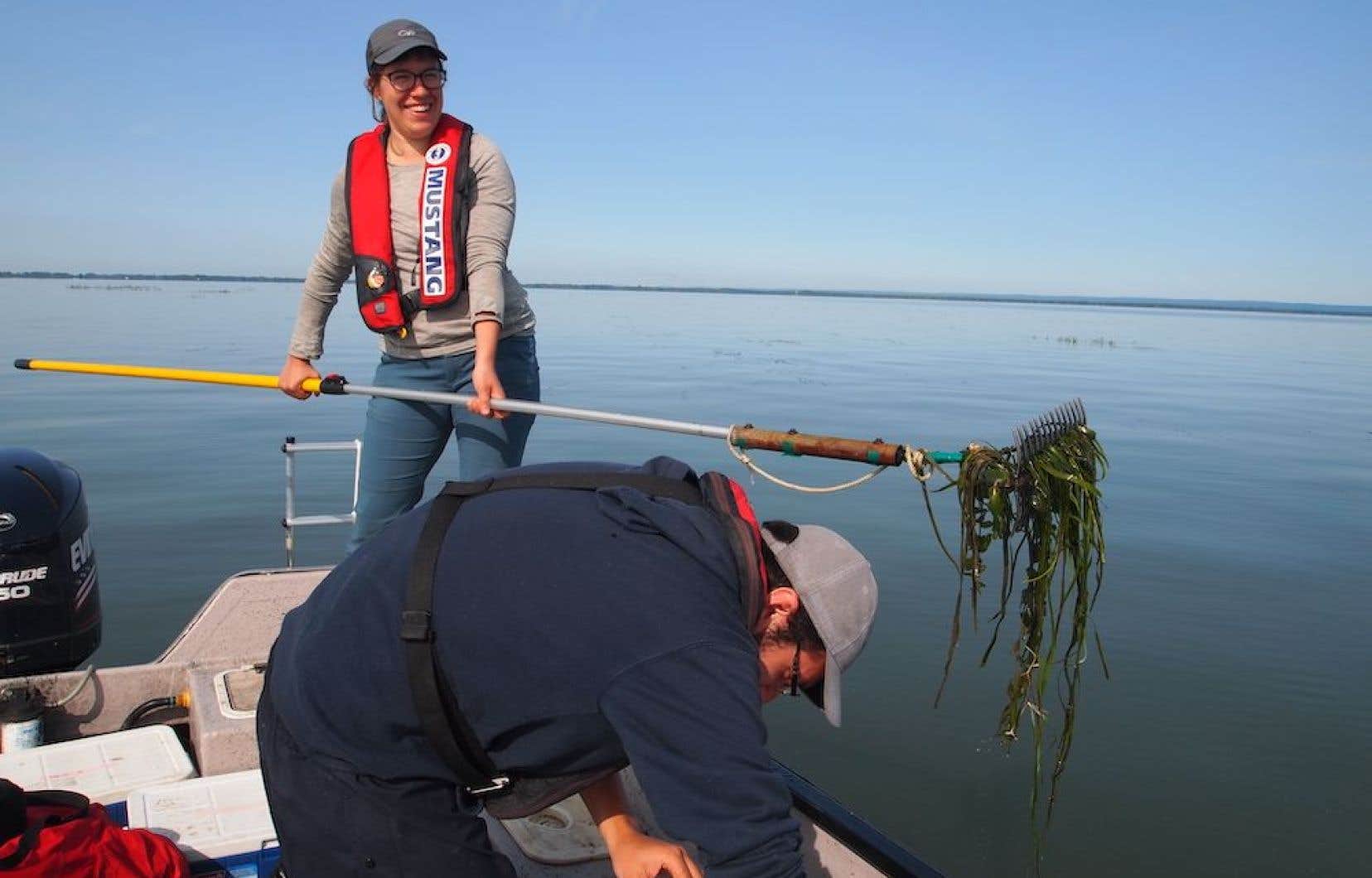This text is taken from the Courrier de la Planète. Click here to subscribe.
For six consecutive summers, from 2012 to 2017, biologist Morgan Botrel wetted her rake in Lake Saint-Pierre, a shallow outcrop of the St. Lawrence River between Sorel-Tracy and Trois-Rivières. His boat had to pierce the thick piles of aquatic vegetation. “Plants often got stuck in the engine,” she laughs. Leaning overboard, she scraped the bottom to pick up the said vegetation and measure its abundance.
Ms. Botrel and her collaborators were not doing this for fun: they were trying to assess the filtering power of an aquatic grass bed located at the outlet of the Saint-François and Yamaska rivers. The researchers suspected that this natural environment considerably improved the quality of the river’s water, but they wanted to confirm it over several seasons.
The plants found in this seagrass—many of them American vallisneria—intercept some of the nitrogen dripping from the surrounding agricultural lands. If it is not caught, this nutrient, derived from fertilizers, contributes to the eutrophication of the river and the estuary: this means that microscopic algae develop in an overabundant way, which “suffocates” the environments.
Just enough water
Plants promote the retention or elimination of nitrogen in two ways, explains Ms. Botrel in an interview. 1) As they grow, they absorb this nutrient and store it in their tissues. 2) Seagrasses also harbor bacteria which “breathe” nitrogen-based molecules in the water and evacuate them in gaseous form to the atmosphere.
To carry out their research project, the biologist and her doctoral director, Professor Roxane Maranger, from the University of Montreal, therefore passed the rake, but also installed a probe in Lake Saint-Pierre to measure the concentration of nitrogen downstream of the meadow. Other readings made it possible to know the quantity of nitrogen carried by the Saint-François and Yamaska rivers upstream.
Result: the 10 square kilometer meadow retained 50 to 90% of the nitrogen coming from the tributaries, according to the study signed by Ms. Botrel and her colleagues, published in September 2022. Unsurprisingly, the more abundant the plants, the more the filter was effective.
Above all, the scientists found that the water level greatly influenced the quantity of plants, and therefore the retention of nitrogen. When the water is too low, aquatic plants lack space to grow. When it is too high, the sunlight does not reach them.
“With climate change, extremes will be favoured: we will therefore see more very low or very high water levels and very intense precipitation. It is believed that the purifying capacity [de cet herbier du lac Saint-Pierre] will decrease,” warns Ms. Botrel.
Global trend
This aquatic grass bed in Lake Saint-Pierre is not the only one having a bad time. According to another study signed by Morgan Botrel and Roxane Maranger, published in February 2023, environments of this type are in decline on a global scale. The degradation of meadows is greater in Asia. In Europe, some improvement has been observed since the 1980s.
The analysis of the two Quebec biologists, based on data collected by other researchers all over the planet, indicates that the main cause of the decline of aquatic grass beds is urban and agricultural development in the watersheds, and the eutrophication that this generates. Because if aquatic plants can prevent eutrophication, they are not immune to this phenomenon if the concentration of nutrients goes into a spin.
Ms. Botrel is now beginning a new chapter in her career and is looking at invasive aquatic plants in Quebec lakes. By virtue of her work over the past few years, she insists that we cherish environments such as the grass beds of Lake Saint-Pierre: “We must preserve them and restore them when they are degraded,” she stresses.
